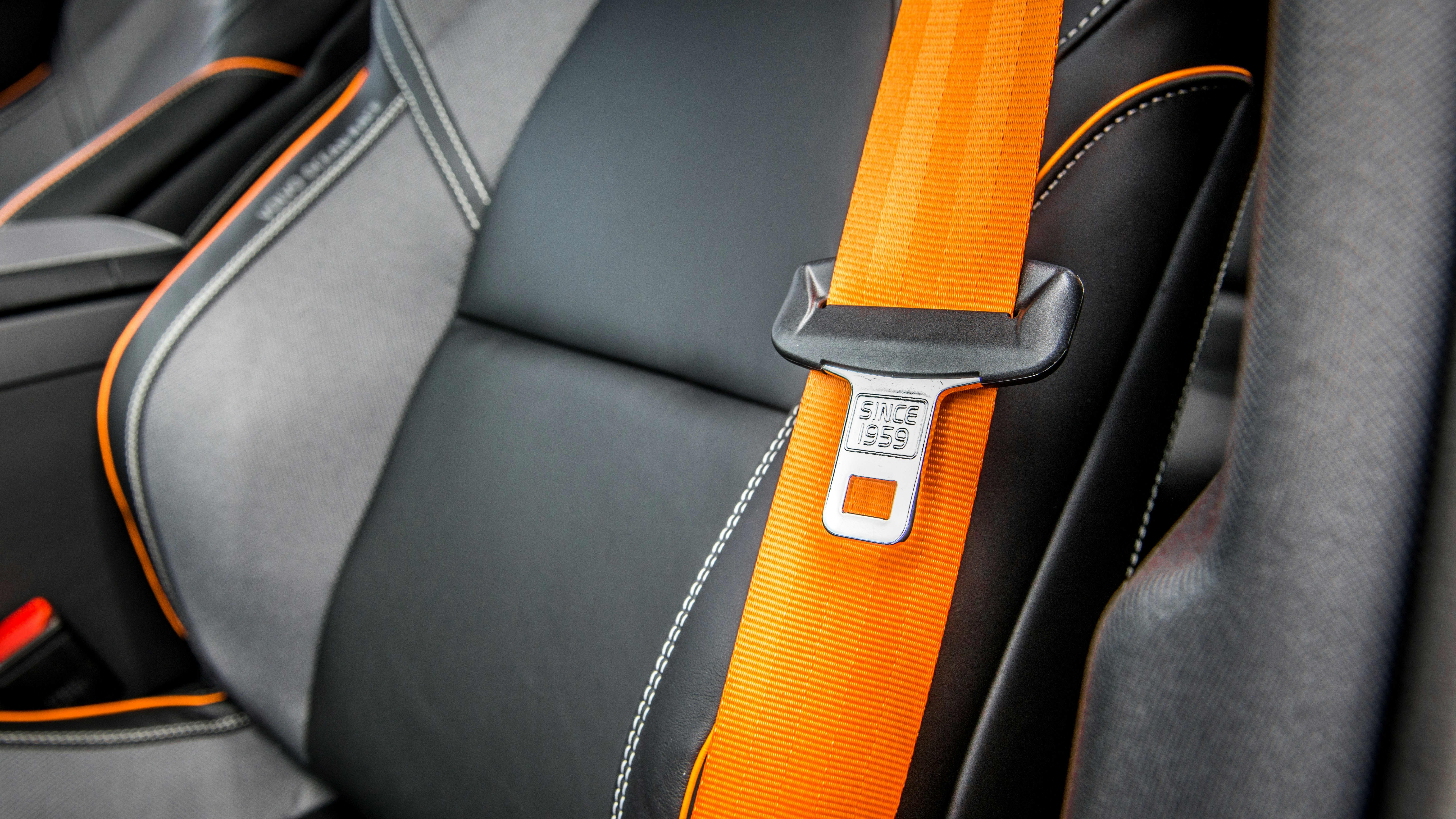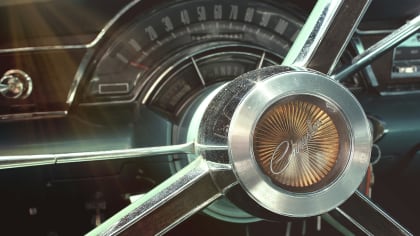California Seatbelt Laws

Click It Or Ticket!
California has specific laws regarding seat belt use designed to enhance safety on the road. All drivers and passengers must wear seatbelts while the vehicle is in motion, and failure to comply can result in fines. The state emphasizes that seatbelt use significantly reduces the risk of severe injury or death during accidents.
By The Editors
Sat, Jul 12, 2025 09:00 PM PST
Images by Remy Lovesy.
Understanding these laws is crucial for both residents and visitors. In California, the seatbelt requirement extends to all occupants of a vehicle, including those in the back seat. Knowing the rules can help individuals avoid legal repercussions and contribute to safer driving practices.
Additionally, California law mandates specific safety regulations for child passengers. Children under the age of eight must be secured in a child safety seat unless they are 4'9" tall or taller. Being aware of these regulations not only keeps drivers compliant but also ensures the safety of vulnerable passengers.
History of Seat Belt Laws in California
California's seat belt laws have evolved significantly over the years, reflecting a growing commitment to road safety.
Legislative Milestones
1986
California enacted a law requiring front-seat occupants to wear seat belts. This was one of the earliest mandatory-use laws in the United States.
1993
The state implemented primary enforcement of seat belt laws, allowing officers to stop drivers solely for not wearing a seat belt. This greatly increased compliance.
Note: In the early 1970s, California was among the first states to require that seat belts be installed in vehicles, but not necessarily used.
Current California Seat Belt Requirements
California enforces strict seat belt laws aimed at increasing safety on the roads. Vehicle occupants must follow these requirements to ensure compliance and enhance protection.
Adult Passengers and Drivers
In California, all drivers and passengers age 16 and older must wear seat belts, whether seated in the front or back. Violating the law may result in:
- A base fine of $20 for the first offense
- A fine of $50 or more for subsequent violations (plus court assessments)
Even if a passenger is unbuckled, the driver may still be held responsible, especially if the passenger is under 16.
Children and Child Restraint Systems
California has specific regulations to ensure the safety of child passengers:
- Under age 2: Must ride in a rear-facing car seat, unless the child weighs 40 lbs or more or is at least 40 inches tall.
- Ages 2 to under 8: Must use a forward-facing seat or booster, depending on size and weight.
- Under 8 OR under 4'9": Must be in a child safety seat or booster seat.
- 8 years and older or at least 4'9" tall: May use the regular seat belt.
All children under 8 must ride in the back seat, with exceptions for certain vehicle types or situations where no rear seats are available.
Enforcement of Seat Belt Laws
Primary vs. Secondary Enforcement
California uses primary enforcement, meaning officers can issue a ticket solely for a seat belt violation, without needing another reason to stop the vehicle. This approach is proven to increase compliance compared to secondary enforcement states.
Consequences for Non-Compliance
Legal penalties include:
- Fines as mentioned above
- Potential points on your driver’s license
- Greater fines and accountability for drivers if passengers under 16 are not properly restrained
Exemptions to the Seat Belt Laws
Certain individuals may be exempt from California’s seat belt requirements.
Medical Exemptions
If a person has a medical condition that makes seat belt use unsafe (such as specific physical disabilities or the use of medical braces), they may qualify for an exemption. To be valid:
- A physician’s written certification is required
- The documentation should describe the condition and reason for exemption
- The person should carry this document while driving
Other Legal Exemptions
- Occupants of vehicles manufactured before 1970 (which may not be equipped with seat belts)
- Individuals engaged in specific employment-related activities, such as postal delivery or operating emergency vehicles
- Riders on motorcycles, mopeds, or certain farm equipment (covered under separate safety rules)
Impact of Seat Belt Use on Road Safety
Seat belts are a critical tool in reducing injuries and fatalities on the road.
Research Findings
- According to the NHTSA, seat belts reduce the risk of fatal injury by 45% for front-seat occupants.
- In California, front-seat seat belt use is around 95%, among the highest in the nation.
- The CDC estimates seat belts save over 15,000 lives each year in the U.S.
States with primary enforcement, like California, consistently report higher compliance and lower fatality rates than those with secondary enforcement laws.
How to Properly Wear a Seat Belt
Correct Positioning for Adults
Proper seat belt positioning can prevent serious internal injuries:
- The lap belt should lie flat across the hips, not the stomach
- The shoulder strap should go across the middle of the chest and shoulder, not under the arm or behind the back
- The belt should be snug and untwisted
If the seat belt does not fit due to size or height, extenders are available to help achieve a proper fit.
Ensuring Child Passengers Are Secure
To ensure proper child safety:
- Follow manufacturer instructions for correct seat installation
- Regularly check for a snug fit and secure harnesses
- Keep children in rear-facing seats as long as possible, until they outgrow the seat’s height and weight limits
The American Academy of Pediatrics recommends rear-facing travel for at least the first two years of life, when possible.

Public Education and Awareness Programs
California supports public education to improve seat belt use across all demographics.
Community Outreach Initiatives
- Schools, local events, and health fairs promote seat belt safety
- Programs target parents, teens, and underserved communities
- Demonstrations and interactive displays show real-world crash data and injury prevention
Educational Resources
California offers:
- Websites and brochures detailing seat belt laws and safe practices
- Multilingual materials for diverse communities
- Collaborative workshops with law enforcement and public health departments
Legal Considerations and Updates
Impact of Seat Belt Laws on Legal Claims
Failing to wear a seat belt may affect the outcome of a personal injury claim in California. Under comparative negligence, if a person is partly responsible for their injuries (e.g., not wearing a seat belt), compensation may be reduced proportionally.
Recent Amendments
- Law now requires seat belt use for all occupants, regardless of seating position.
- Fines are $20 for first violations and $50 for additional violations, plus possible court fees.
- Enhanced focus on enforcement and public education has helped raise awareness and compliance.
Future Legislative Changes
- New proposals may involve technology enhancements, like in-car seat belt reminders or usage sensors.
- Greater emphasis on youth education, especially targeting teen drivers.
- Potential expansion of public campaigns to boost safety for rideshare passengers and back-seat occupants.
Make sure to check all laws and regualtions and learn how they effect you (and your loved ones).






